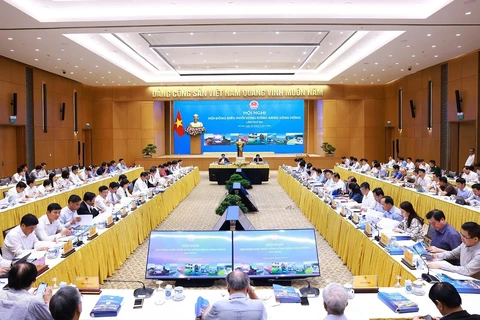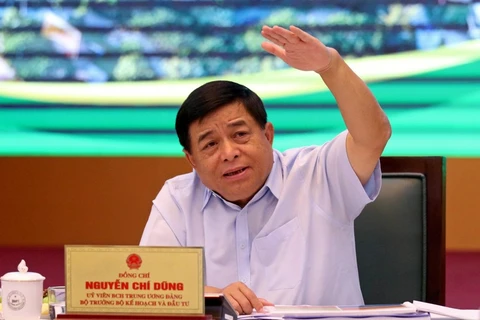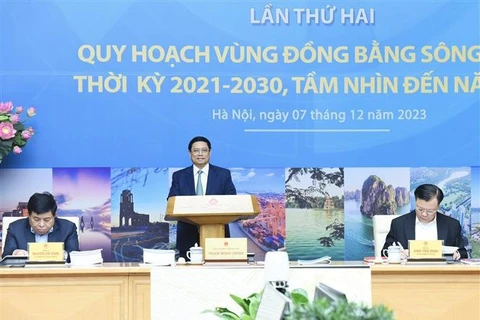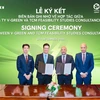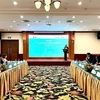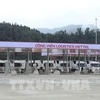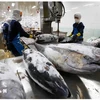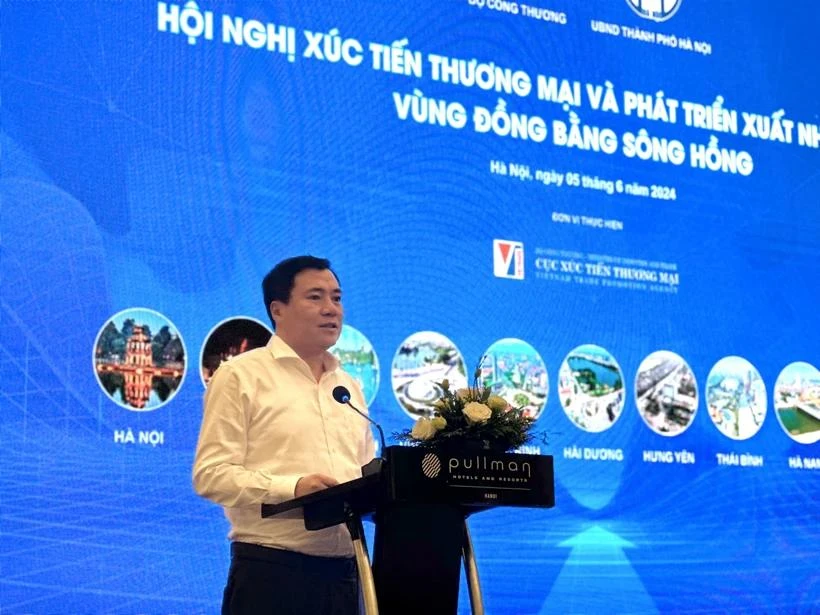
Hanoi (VNA) - Breakthrough policies are necessary to fully harness the potential of the Red River Delta, which holds a significant proportion in the country’s overall import-export structure, heard a trade promotion conference held by the Ministry of Industry and Trade (MoIT) in Hanoi on June 5.
Situated in a location conducive to the development of high-tech, supporting, and logistics industries, the region comprises 11 provinces and cities of Hanoi, Hai Phong, Vinh Phuc, Bac Ninh, Hung Yen, Hai Duong, Quang Ninh, Thai Binh, Nam Dinh, Ha Nam, and Ninh Binh.
According to statistics from the MoIT, the region’s import-export turnover surpassed 260.88 billion USD, the highest among Vietnam’s six economic regions, accounting for 38% of the country's total trade value. Additionally, it lured foreign direct investment worth more than 17.38 billion USD, with five out of 11 localities in the region taking the lead nationwide.
Vu Thi Kim Phuong, Deputy Director of the Hai Duong Department of Industry and Trade, pointed out that regional connectivity activities, particularly in the production, consumption, and export of agricultural products, including Hai Duong, have encountered several difficulties.
Cooperation and connectivity among those in the delta remain largely individualistic, failing to fully exploit the potential and strengths of each locality, she said. Collaboration activities are underway but still lack strength and remain spontaneous, while there is no formal mechanism for them on a regional scale.

Vu Ba Phu, Director of the MoIT’s Vietnam Trade Promotion Agency, noted that the implementation of regional trade promotion activities still faces some difficulties, particularly in terms of organisational structure and available resources.
Specifically, the region currently has three trade promotion centres run by different units, leading to inconsistencies in the management and implementation of their activities. Additionally, some localities encounter challenges in arranging suitable locations and services for organising large-scale trade promotion activities on a regular basis.
Up to now, in the three growth poles of Hanoi, Hai Phong, and Quang Ninh, there is a lack of exhibition and convention venues with sufficient space and functionality to organise major events serving investment attraction, trade promotion and culture-tourism showcases, Phu said.
Nguyen Kieu Oanh, Deputy Director of the Hanoi Department of Industry and Trade, said that the capital has established and developed clusters of mechanical engineering linkages and groups of enterprises specialising in mechanical products, thereby creating high competitiveness and a favourable environment for partnerships, especially in trade, outsourcing, transport, and waste treatment. The cooperation has significantly reduced costs, inventory, and delivery times.

Deputy Minister of Industry and Trade Nguyen Sinh Nhat Tan suggested localities coordinate to develop flagship goods for each product group in the region, thereby identifying suitable supply and value chain models.
He also called on enterprises to update information on foreign markets to understand different consumer preferences, adjust products accordingly, and enhance the competitiveness of their products.
Firms need to invest significantly in nurturing the knowledge and capacity of their personnel engaged in international trade and updating technology and e-commerce trends, thereby opening up many opportunities to reach customers, cutting intermediary costs, and boosting competitiveness, Tan said./.
